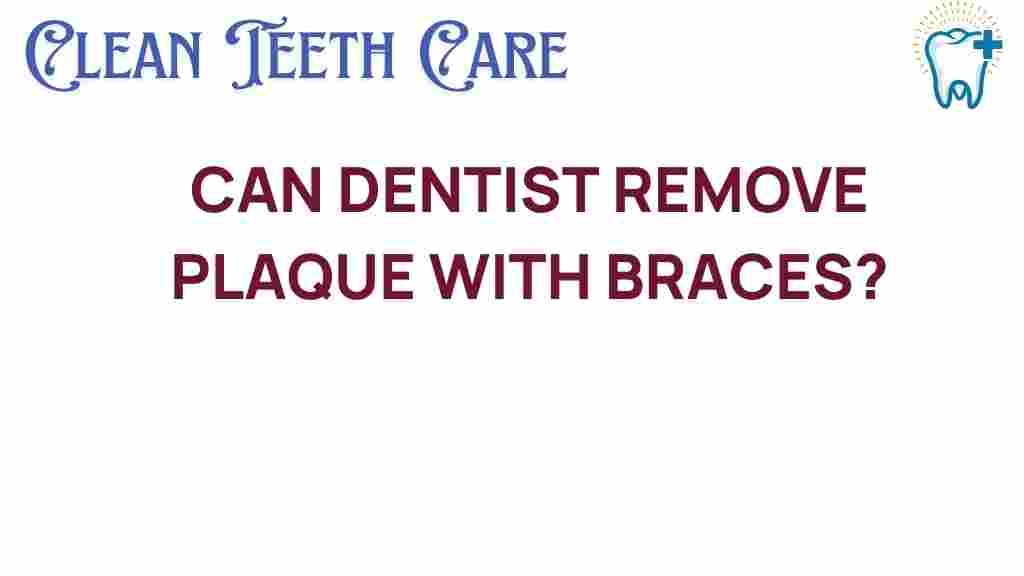The Surprising Truth: Can Dentists Remove Plaque with Braces?
Oral hygiene is a vital component of maintaining good health, particularly when you have braces. The presence of braces can make plaque removal more challenging, leading many to wonder: Can dentists effectively remove plaque with braces? This article will explore this question, delve into the implications of plaque buildup, and provide insights into dental care and orthodontics.
Understanding Plaque and Its Impact on Oral Health
Plaque is a sticky film of bacteria that forms on the teeth and gums. If not removed through proper oral hygiene practices, it can harden into tartar, leading to various dental issues such as cavities and gum disease. For individuals with braces, the risk of plaque buildup increases due to the difficulty in cleaning around brackets and wires.
Why Is Plaque Removal Crucial for Those with Braces?
Maintaining oral hygiene with braces is essential for several reasons:
- Preventing Cavities: Braces create additional surfaces for plaque to adhere to, increasing the risk of cavities.
- Avoiding Gum Disease: Plaque can lead to gingivitis and other forms of gum disease, causing inflammation and discomfort.
- Ensuring Treatment Success: Excess plaque can interfere with the effectiveness of orthodontic treatment, potentially prolonging the duration of wearing braces.
The Role of Dentists in Plaque Removal with Braces
Dentists play a crucial role in maintaining oral hygiene for patients with braces. Here’s how they contribute:
- Professional Teeth Cleaning: Dentists provide comprehensive teeth cleaning services that effectively remove plaque and tartar buildup.
- Education on Oral Hygiene: Dentists offer guidance on the best practices for maintaining oral hygiene while wearing braces.
- Monitoring Oral Health: Regular dental visits allow dentists to monitor any plaque buildup and address issues before they escalate.
Step-by-Step Process of Plaque Removal with Braces
When you visit the dentist for plaque removal while wearing braces, the process typically involves several key steps:
1. Initial Assessment
Your dentist will begin with an oral examination to assess the extent of plaque buildup and the overall health of your teeth and gums. They may use X-rays to get a detailed view of your dental health.
2. Professional Cleaning
During the cleaning appointment, the dentist or dental hygienist will employ specialized tools to:
- Remove Plaque and Tartar: Using an ultrasonic scaler or hand tools, they will gently remove plaque and tartar from around the brackets and wires.
- Polish Teeth: After removing the buildup, your teeth will be polished with a special paste to make them smooth and help prevent future plaque accumulation.
- Fluoride Treatment: A fluoride treatment may be applied to strengthen the enamel and protect against cavities.
3. Post-Cleaning Care
Your dentist will provide recommendations for maintaining oral hygiene at home, which is crucial for preventing plaque buildup in the future. This may include:
- Using an interdental brush to clean between brackets and wires.
- Employing a water flosser for effective plaque removal.
- Brushing at least twice a day and flossing regularly.
Troubleshooting Common Issues with Plaque Buildup and Braces
Even with diligent oral care, some patients may still struggle with plaque buildup. Here are some troubleshooting tips:
1. Difficulty Cleaning Around Brackets
If you find it challenging to clean around your braces, consider the following:
- Use an orthodontic toothbrush designed to reach around brackets.
- Try a soft-bristled toothbrush to avoid damaging your braces.
- Incorporate dental wax to relieve irritation and make cleaning easier.
2. Persistent Plaque Buildup
If plaque continues to accumulate despite regular cleaning, consult your dentist for further advice. They may recommend:
- More frequent dental cleanings.
- Changes in your oral hygiene routine.
- Potential adjustments to your braces if they are affecting your ability to clean your teeth effectively.
3. Sensitivity and Discomfort
Some patients may experience sensitivity or discomfort when cleaning their teeth. If this occurs, consider:
- Using desensitizing toothpaste to alleviate discomfort.
- Consulting your dentist about alternative cleaning methods.
Maintaining Good Oral Hygiene with Braces
To ensure effective plaque removal and maintain optimal oral health while wearing braces, follow these essential dental care tips:
- Brush Regularly: Brush your teeth at least twice a day, focusing on all surfaces of your teeth and around the braces.
- Floss Daily: Use floss threaders or orthodontic floss to clean between your teeth and brackets.
- Use Mouthwash: An antibacterial mouthwash can help reduce plaque and freshen your breath.
- Limit Sugary Foods: Reducing your intake of sugar can help minimize plaque buildup.
Conclusion
In conclusion, dentists can effectively remove plaque with braces through professional cleaning and patient education on maintaining oral hygiene. With the right dental care and commitment to a thorough cleaning routine, individuals with braces can minimize plaque buildup and enjoy a healthier smile. Remember, maintaining good oral hygiene is crucial not just for the success of your orthodontic treatment but also for your overall dental health.
For more information on maintaining oral hygiene with braces, check out this helpful resource. If you’re looking for professional dental treatment, don’t hesitate to consult your dentist for personalized advice.
This article is in the category Hygiene and created by CleanTeethCare Team
